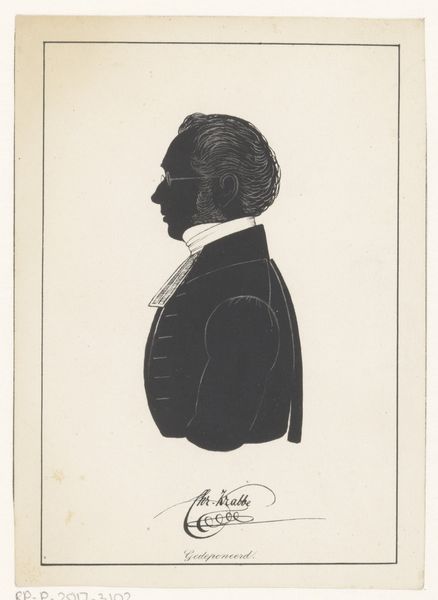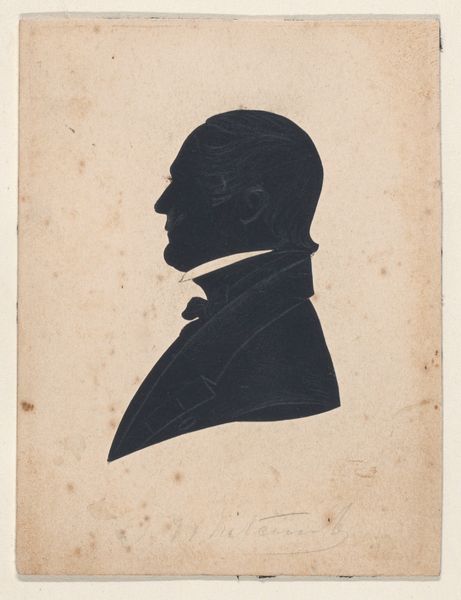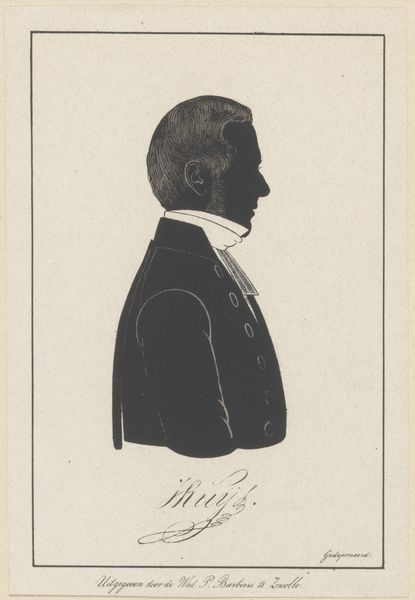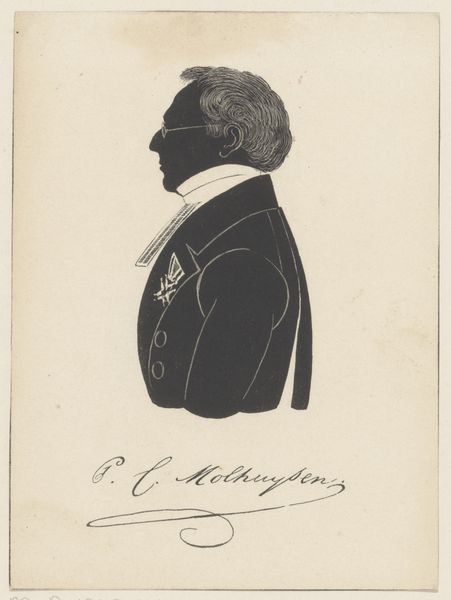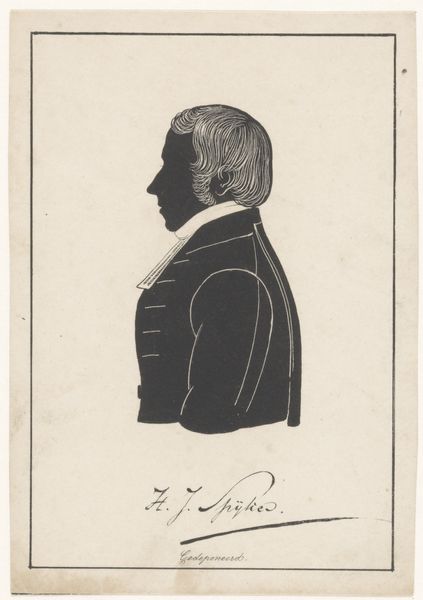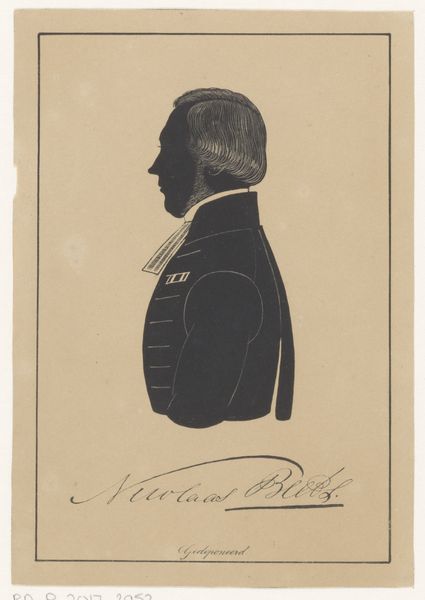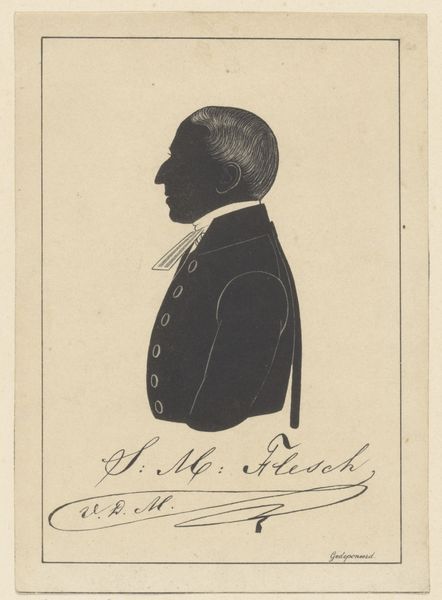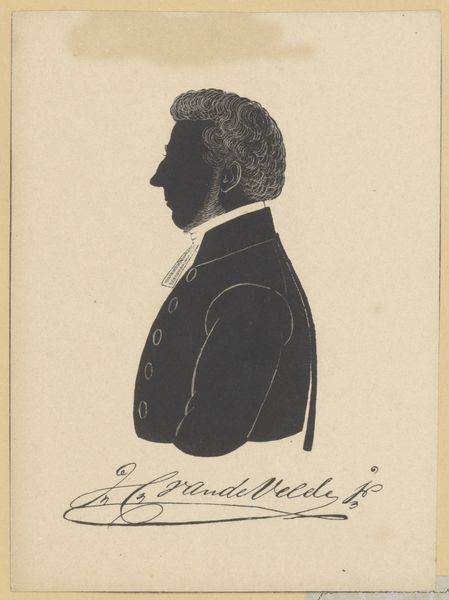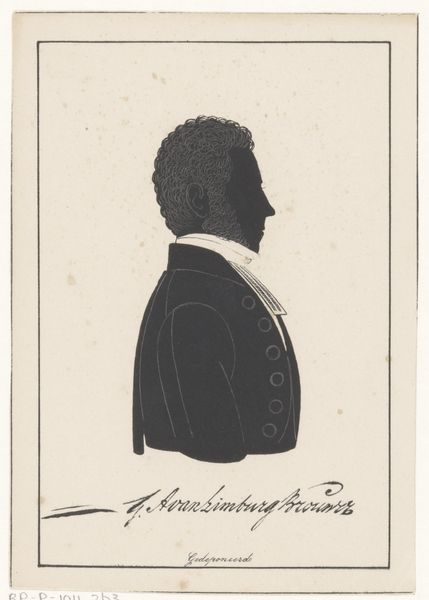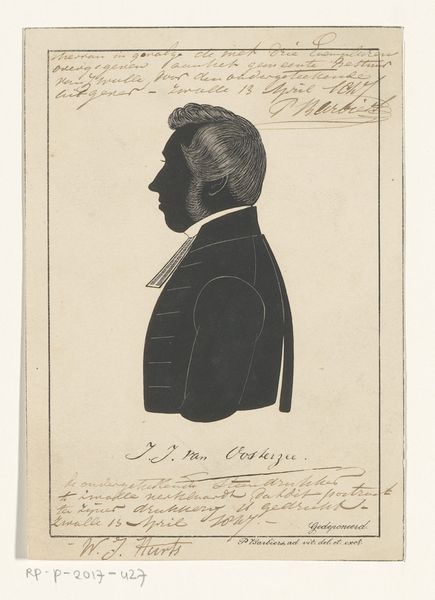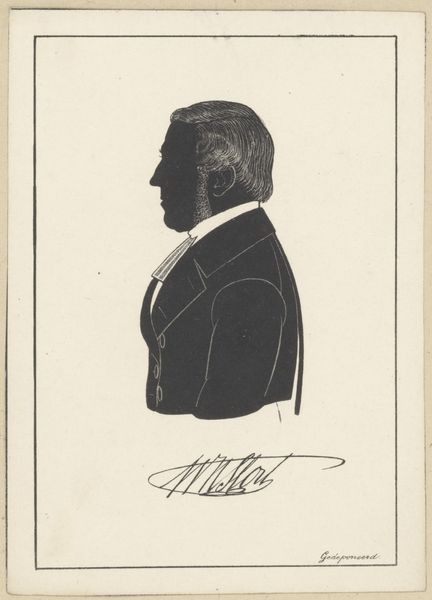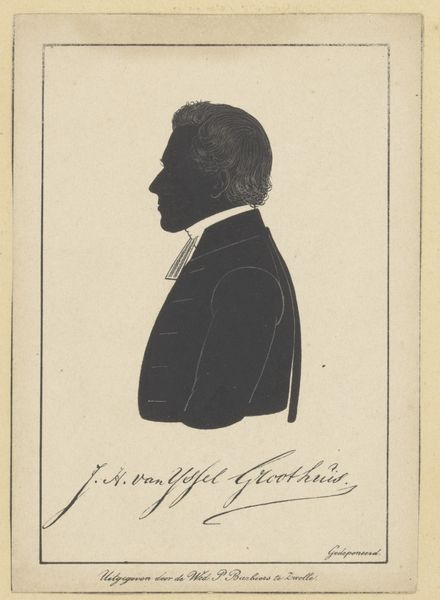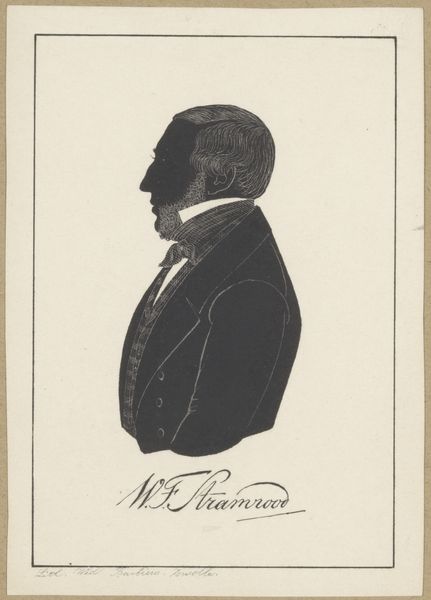
Dimensions: height 142 mm, width 96 mm
Copyright: Rijks Museum: Open Domain
Editor: So, this is Pieter Barbiers' "Silhouetportret van A. Wassenbergh," made sometime between 1848 and 1862, using ink on paper. It feels like a memento, something intimate. What's your read on this silhouette, especially considering its historical context? Curator: It’s interesting to consider how portraiture shifted during this period. Silhouette portraits became incredibly popular and were a relatively affordable way to document someone's likeness before photography was widespread. Who got to be remembered, and in what format? Was this a formal commission or a personal token? Editor: That’s a great point about access to portraiture. What do you think the silhouette, as opposed to a painting, communicates about the sitter’s social standing, or maybe even the artist’s relationship to the subject? Curator: The starkness of the silhouette perhaps democratized the image. There's no opulent background, no lavish display of wealth. Just the essence of a person. The meticulous rendering hints at a respect for the sitter, yet the simplified form made portraiture more widely accessible. Was it a subversive form or simply a reflection of emerging social changes? Also, who was Wassenbergh? Researching him could enrich our understanding. Editor: So, thinking about the context—the rise of photography and changing social structures—affects how we view what might seem like a simple portrait. It makes me wonder about other seemingly straightforward images! Curator: Exactly! This image isn't merely a representation; it's a social document reflecting a specific moment in time.
Comments
No comments
Be the first to comment and join the conversation on the ultimate creative platform.
